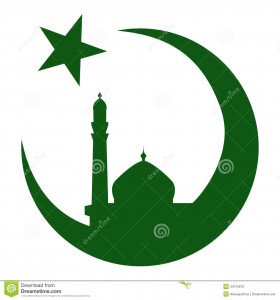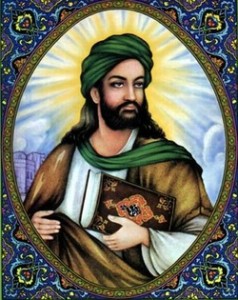[First posted in 2012; another interesting feature of Paul Johnson’s A History of the Jews is the development of Islam, What is it about this world religion that is so misunderstood by its most fanatic adherents who misuse it and the name of its God in perpetrating the most horrific acts against all humanity including many of their own people sharing their same faith? This book is downloadable as ebook from amazon.com, and part of our MUST READ category. Reformatting and highlight ours.
Related posts:
- The 3rd Monotheistic Religion that is from Abraham
- Revisit: The ‘Redeemed’ and the ‘Elect’ in Judaism, Christianity, and Islam
—Admin1]
—————————–
Like Christianity, Islam was originally a heterodox movement within Judaism, which diverged to the point where it became a separate religion, and then rapidly developed its own dynamic and characteristics. The Jewish presence in Arabia is very ancient. In the south, in what is now Yemen, Jewish trading interests date back to the first century BC, but in the north or Hijaz, it goes back very much further. One Arab historical legend says that Jewish settlement in Medina occurred under King David, and another puts it back to Moses. Babylonian inscriptions discovered in 1956 suggest that Jewish religious communities were introduced in the Hijaz, in the 6th century BC, and they may have been there even before. [Source: Charles ‘C. Torrey, The Jewish Foundation of Islam). But the first definite confirmation, in the form of Jewish names in tomb inscriptions and graffiti, does not go back further than the 1st century BC. At all events, during the early Christian era, Judaism spread in north Arabia and some tribes became wholly Jewish. There is evidence that Jewish poets flourished in the region of Medina in the 4th century AD, and it is even possible that a Jewish-ruled state existed there at this time. According to Arab sources, about 20 tribes in and around Medina were Jewish.
These settled oasis tribes were traders as much as pastoralists, and Islam was from the start a semi-urban trader’s religion rather than a desert one. But the desert was important, because Jews living on its fringes, or moving to it escape the corruptions of city life, such as the Nazirites, had always practiced a more rigorous form of Judaism and, in particular, had been uncompromising in their monotheism. That was what attracted Mohammed.
The influence of Christianity, which would have been strictly monotheistic in his eyes, was very slight, at any rate at this early stage. What he seems to have wished to do was to destroy the polytheistic paganism of the oasis culture by giving the Arabs Jewish ethical monotheism in a language they could understand and in terms adapted to their ways.
- He accepted the Jewish God and their prophets, the idea of fixed law embodied in scripture—the Koran being an Arabic substitute for the Bible—and the addition of an Oral Law applied in religious courts.
- Like the Jews, the Moslems were originally reluctant to commit Oral Law to writing.
- Like the Jews, they eventually did so.
- Like the Jews, they developed the practice of responsum, and the earliest responsa seem to have consciously adopted a Judaic formula.
- Like the Jews, the Moslems accepted strict and elaborate codes covering diet, ritual purity and cleanliness.
Mohammed’s development of a separate religion began when he realized that the Jews of Medina were not prepared to accept his arbitrarily contrived Arab version of Judaism. Had Mohammed possessed the skill and patience to work out an Arab halakhah, the result might have been different. But it is unlikely. One of the strongest characteristics of Judaism is the willingness of Jewish communities to exist in distant areas without the need for acculturalization. At all events, Mohammed rebuffed, and he thereafter gave a deliberate new thrust to Islamic monotheism.
- He altered the nature of the Sabbath and changed it to Friday.
- He changed the orientation of prayers from Jerusalem to Mecca.
- He redated the principal feast.
- Most important of all, he declared that most of the Jewish dietary laws were simply a punishment for their past misdeeds, and so abolished them, though he retained the prohibitions on pork, blood and carcasses, and some of the slaughtering rules.
All these changes made it quite impossible to bring about a merging of Jewish and Islamic communities, however much they might agree on ethical or dogmatic fundamentals; but, in addition, Islam soon developed a dogmatic dynamism of its own, and theological debate — leading to violent sectarianism — soon began to play a central role in Islam, as in Christianity.
Above all, Islam quickly created a theory and practice of forcible conversion, as the Jews had done in the time of Joshua, David and the Hasmoneans, but which rabbinic Judaism had implicitly and conclusively renounced. It spread with astonishing speed, to engulf the Near East, the whole of the southern Mediterranean, Spain and vast areas of Asia. By the early 8th century, the Jewish communities which still retained precarious footholds in the Greek and Latin worlds, found themselves cocooned in a vast Islamic theocracy, which they had in a sense spawned and renounced, and which now held the key to their very survival. But, by now, they had developed their own life-support system, the Talmud, and its unique formula for self-government —the Cathedocracy.


